Blog Content
25
Jun
2025
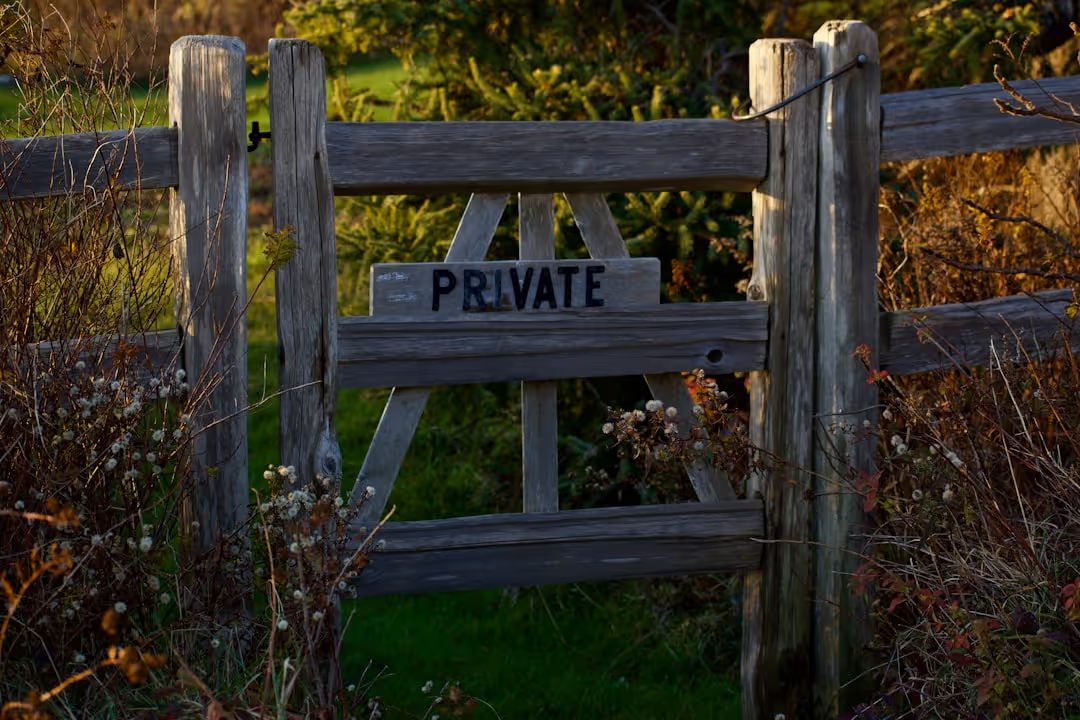
Yard privacy fencing options give homeowners the power to transform their outdoor spaces into private sanctuaries. Whether you're tired of neighbors peering into your backyard barbecues or need a secure boundary for kids and pets, the right privacy fence creates the peaceful retreat you deserve.
Top yard privacy fencing options include:
The average privacy fence costs $40 to $150 per linear foot depending on material and height. Most homeowners choose 6-foot panels as the ideal balance of privacy and curb appeal, though 8-foot options provide complete visual screening.
Beyond privacy, these fences boost property values, reduce noise, provide wind protection, and create defined outdoor living spaces. Pool owners especially benefit from safety compliance and theft deterrence.
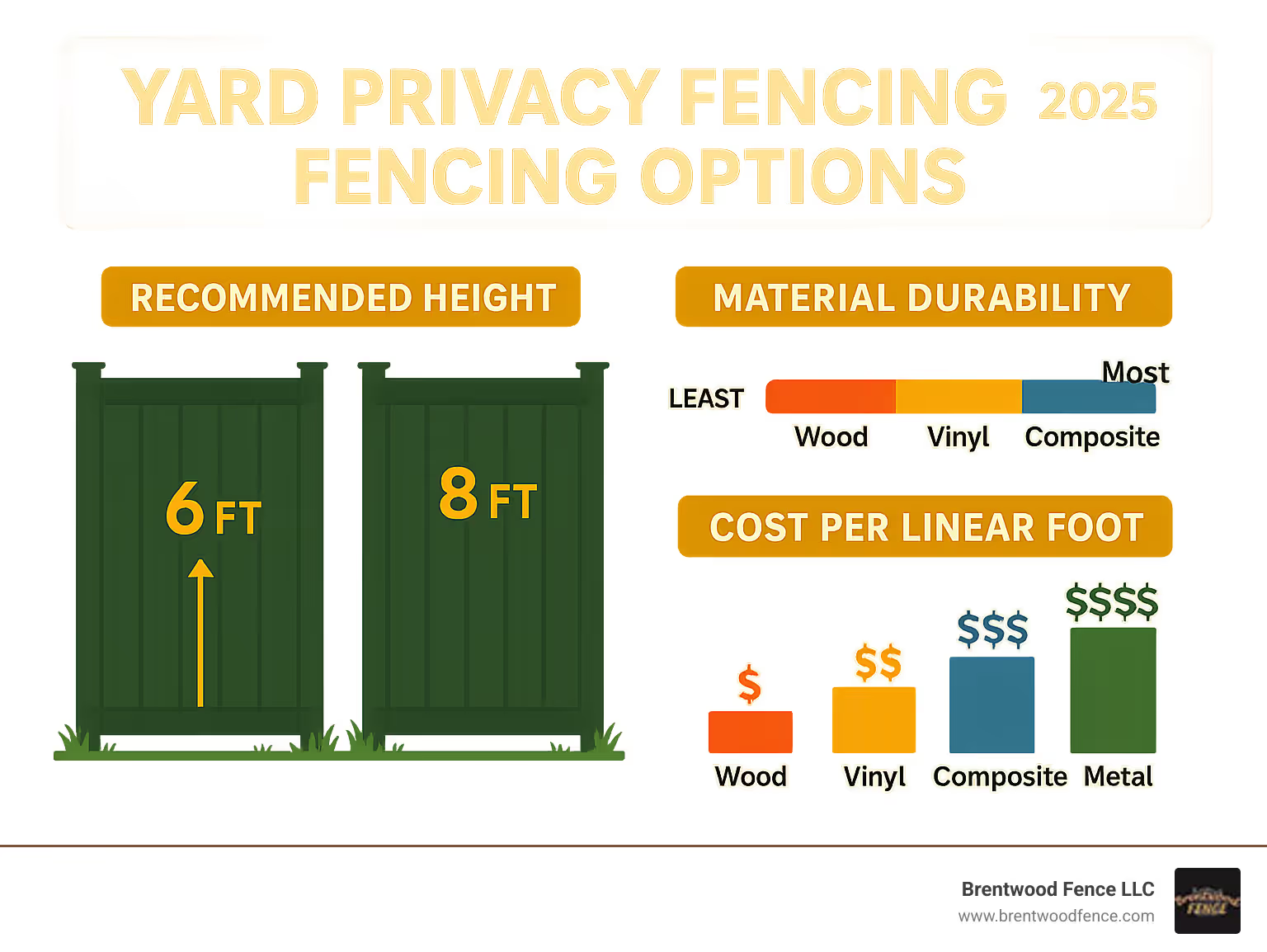
Yard privacy fencing options vocab explained:
Think of a privacy fence as your yard's personal bodyguard. Unlike picket fences with their gaps, privacy fences are solid barriers designed to keep prying eyes out and your family's business in. These sturdy panels typically stand 6 to 8 feet tall and feature no spaces between boards - creating a complete visual block.
Privacy fences do more than just keep neighbors from watching you flip burgers in your pajamas. They're hardworking multitaskers that earn their keep in several ways.
Property boundaries become crystal clear with a solid fence line. Security gets a major boost too - when potential troublemakers can't see what you've got in your backyard, they're more likely to move along.
The noise reduction might surprise you. A solid fence acts like a buffer, cutting down street sounds and general urban buzz. And if you've got kids or pets, a privacy fence becomes your peace-of-mind partner.
After years of helping homeowners across New Hampshire, Massachusetts, and Maine, we've noticed that most folks invest in yard privacy fencing options for four main reasons.
Privacy from neighbors tops the list every time. Whether your houses are practically touching or you just want to sip your morning coffee without making small talk, a solid fence gives you that visual breathing room.
Theft deterrence provides real peace of mind. When your grill, patio furniture, or pool equipment isn't on display for every passerby to catalog, you're removing temptation from the equation.
Pool safety compliance often makes the decision for you. Many areas require privacy fencing around pools to prevent tragic accidents, with specific requirements for height and gap sizes.
Creating a calm soundscape transforms how you experience your outdoor space. A solid barrier can knock 5 to 10 decibels off the ambient noise, making conversations easier and relaxation deeper.
Choosing the right material for your privacy fence feels overwhelming at first, but each option serves different needs and budgets. Let's walk through the most popular yard privacy fencing options.
Wood fencing wins hearts for good reason - it's beautiful, versatile, and works with virtually any home style. Cedar stands as the gold standard, naturally fighting off rot and bugs while aging gracefully. Pressure-treated pine offers similar benefits at a friendlier price point. Most wood fences give you 15-20 solid years of service with proper care.
Vinyl fencing has become the busy homeowner's best friend. No more weekend staining sessions, no worrying about termites, and panels that look great for decades. Quality vinyl resists fading and cracking while shrugging off harsh weather. The upfront cost stings more than wood, but the 30+ year lifespan and minimal maintenance make it worthwhile.
Metal fencing brings serious durability. Aluminum panels never rust and need almost zero upkeep, while steel provides fortress-level strength. These materials shine in modern homes and can incorporate beautiful decorative touches.
Composite fencing gives you the best of both worlds - the warm look of wood combined with synthetic durability. Made from recycled wood fibers and plastic, these boards resist rot, insects, and fading while requiring minimal maintenance.
Stone and brick walls represent the ultimate commitment - expensive upfront but potentially lasting centuries. They block sound exceptionally well and can transform your property value overnight.
Living green walls let nature do the work through dense plantings of evergreen hedges or bamboo groves. They take patience to establish but reward you with year-round beauty and environmental benefits.
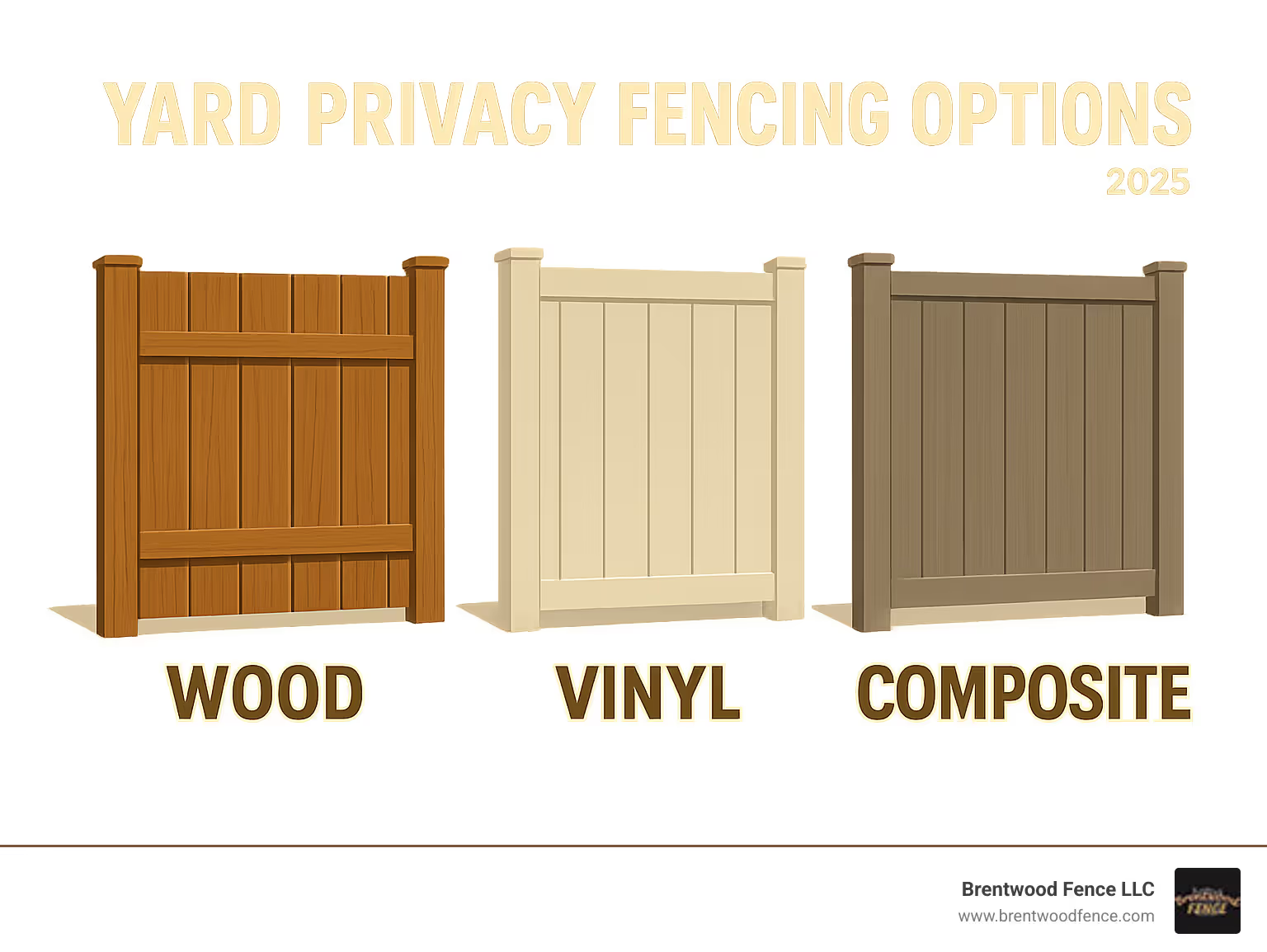
Wood charms with its natural beauty and design flexibility. You can cut it, stain it, and repair sections easily. The downside? Wood demands attention - regular staining, sealing, and watching for rot or insect damage.
Vinyl eliminates maintenance headaches completely. Modern panels resist fading and wind damage up to 130 mph. The catch comes with the higher price tag and some panels becoming brittle during extreme cold.
Composite materials deliver wood's appearance without the maintenance hassles. Made from recycled materials, they're splinter-free and fade-resistant. However, they cost more upfront and can get uncomfortably hot in direct summer sun.
Metal options provide maximum security and durability while being completely recyclable. The drawbacks include potential rust if protective coatings fail and the need for additional screening materials to achieve full privacy.
Stone and brick create permanent installations that block sound better than any other option while boosting property values significantly. The reality check comes with the substantial cost and permanent commitment.
For homeowners dealing with New England's freeze-thaw cycles, vinyl and composite materials often prove most practical. More info about Vinyl Fencing Installation Services can help you understand regional considerations.
Environmentally conscious homeowners don't have to compromise on quality when choosing yard privacy fencing options.
Composite from recycled materials turns waste into wonderful fencing. Each panel diverts thousands of plastic items from landfills while offering superior durability and fade resistance.
FSC-certified cedar comes from forests managed with future generations in mind. Since cedar needs no chemical treatments, it's perfectly safe around vegetable gardens and children's play areas.
Permeable hedge barriers work overtime for your property and the environment. Native species like Eastern Red Cedar or Arborvitae create year-round privacy screens while supporting local wildlife. Scientific research on urban green barriers shows these living fences can reduce urban heat effects and increase property values.
Bamboo panels showcase the fastest-growing renewable resource on Earth. Clumping varieties stay put nicely, while running types need root barriers to prevent spreading.
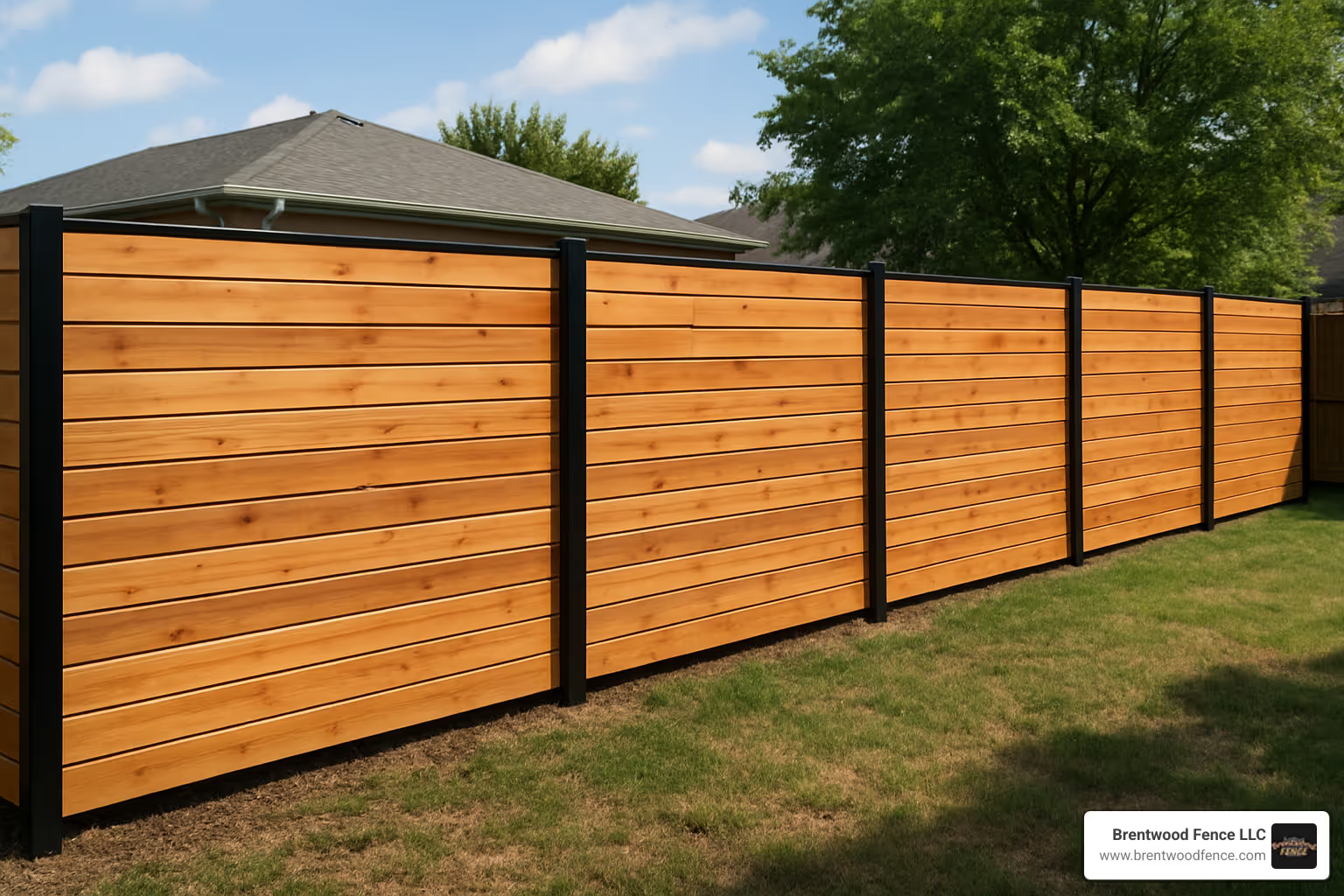
Your privacy fence doesn't have to be boring. The right design can transform a basic barrier into an attractive feature that improves your home's curb appeal.
Vertical board fences remain the go-to choice for traditional privacy. The board-on-board variation creates depth by overlapping boards, while shadow box style places boards on opposite sides with small gaps that allow airflow while maintaining privacy.
Horizontal slat fences create clean lines that make small yards appear larger. This modern approach works beautifully with today's architectural trends.
Lattice-top designs give you the best of both worlds - solid privacy at eye level with decorative openwork above. Basket weave patterns add visual texture, perfect for craftsman-style homes.
For ultra-modern homes, mixed material combinations - like metal posts with wood panels - offer endless customization possibilities. One surprising trend? Dark paint colors like black actually make surrounding plants pop while causing the fence to visually recede.

The secret to a fence that looks like it belongs? Matching your yard privacy fencing options to your home's architectural personality.
Colonial homes shine with traditional vertical board fences in crisp white or natural wood tones. Farmhouse styles call for board-and-batten designs that mirror classic barn siding.
Mid-century modern homes demand clean horizontal lines and mixed materials. Horizontal cedar slats paired with sleek metal posts create the geometric simplicity these architectural gems deserve. Contemporary houses can handle bold combinations of concrete, metal, and wood.
The key is creating visual harmony between your fence, home, and surroundings. More info about Privacy Fence Ideas NH, MA, ME for inspiration specific to New England architectural styles.
Mural designs turn blank fence panels into personal art galleries. Hanging basket systems add instant color and vertical gardening space.
Solar lighting integration extends your outdoor enjoyment past sunset while boosting security. LED strip lights create ambient evening lighting, while post-cap fixtures add both function and charm.
Integrated bench seating maximizes every square foot in smaller yards. Living vine installations soften harsh fence lines with natural beauty - clematis, honeysuckle, or grape vines create seasonal interest.
For something unique, consider art panel inserts - replace occasional fence boards with decorative metal cutouts or carved wood panels. These create stunning focal points while maintaining privacy.
Understanding the real costs of yard privacy fencing options helps you make smart decisions that won't surprise your wallet later.
Wood fencing typically runs $15-40 per linear foot for materials. Vinyl fencing starts around $25-60 per linear foot, while composite options range from $30-70 per linear foot. Metal fencing can hit $35-80 per linear foot, and stone or brick walls budget $60-200 per linear foot.
Installation often doubles these costs. Rocky soil, sloped yards, or limited access each add to the final bill. Height makes a huge difference - an 8-foot fence typically runs 25-40% higher than a 6-foot version due to deeper post holes and increased structural requirements.
Don't forget extras: permits ($50-300), gates ($200-800 each), and self-closing hardware for pool safety. Annual maintenance costs vary dramatically - wood fences might need $200-500 yearly for staining and repairs, while vinyl requires maybe $50-100 for occasional cleaning.
Six-foot fences hit the sweet spot for most homeowners, providing good privacy without breaking budgets. Eight-foot fences offer complete visual screening but cost significantly more.
Add-ons quickly transform reasonable projects into budget-busters. Gates cost $300-1,500 each, lattice tops add $8-15 per linear foot, and integrated lighting runs $100-500 per fixture.
Regional differences matter - urban areas typically cost 20-40% more than rural locations. Spring and early summer represent peak installation season when contractors charge premium rates.
More info about Residential Fencing Options NH, MA, ME for specific regional pricing guidance.
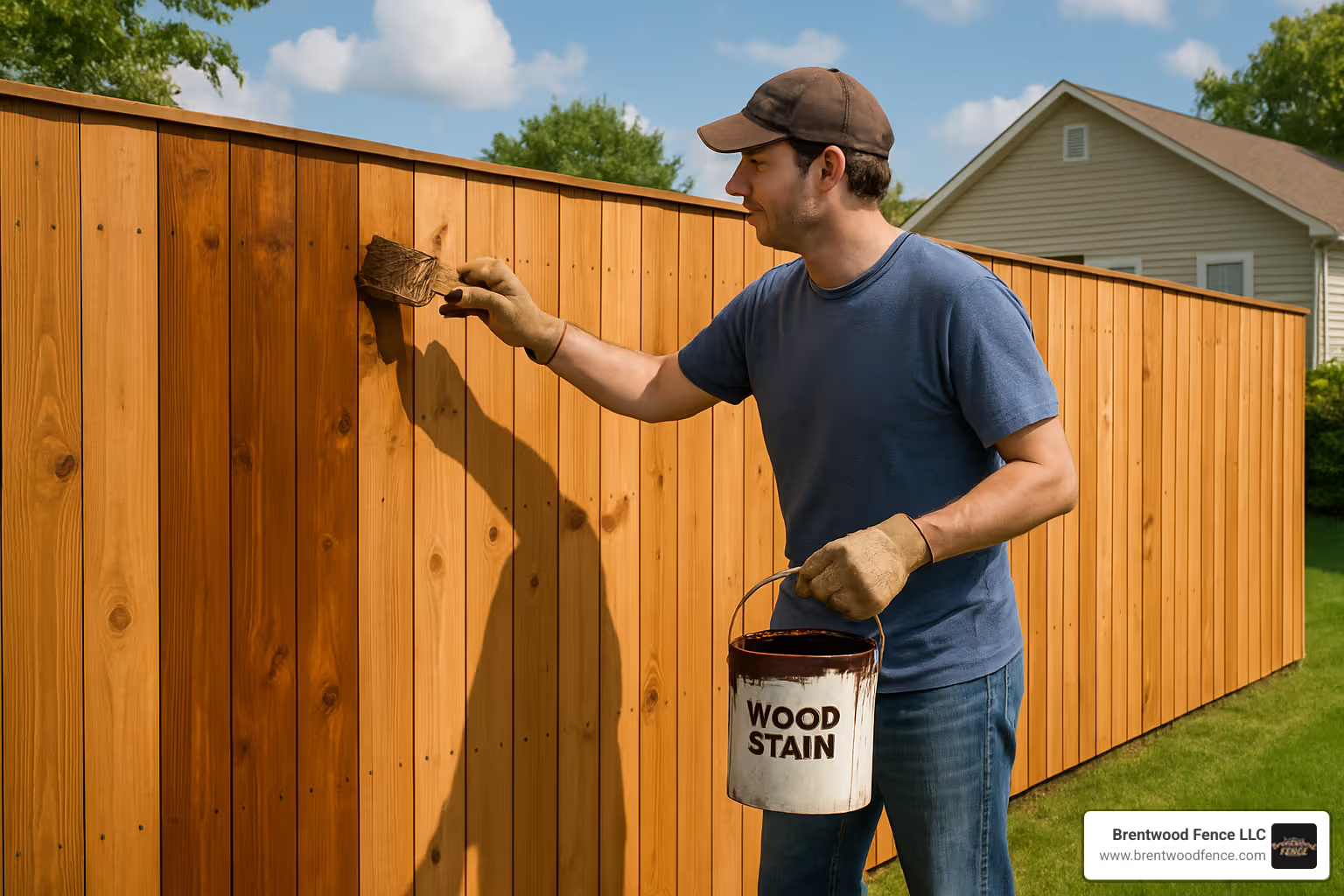
Wood fences need the most attention. Wait 60 days after installation to let natural moisture escape, then apply stain or sealant. Recoat every 2-3 years or when water stops beading on the surface.
Vinyl fences are wonderfully low-maintenance. A simple soap and water wash once or twice yearly keeps them looking new. Check gate hardware annually and oil hinges as needed.
Composite fencing requires periodic cleaning with mild detergent. The beauty of composite is its natural resistance to fading and staining.
Metal fences require vigilance against rust. Clean annually and touch up scratched paint immediately - small touch-ups prevent major repainting projects.
Regular inspection schedules catch problems early when they're cheap to fix. Walk your fence line seasonally, especially after severe weather.
Before installing any privacy fence, you'll need to steer local regulations and consider environmental impacts.
Local zoning ordinances typically regulate fence height, setback requirements, and placement restrictions. Most residential areas allow 6-foot privacy fences in backyards but may limit front yard fences to 3-4 feet.
HOA covenants can be more restrictive than municipal codes, often specifying approved materials, colors, and styles. Some associations require architectural review committee approval.
Pool safety codes mandate specific fence requirements including minimum heights (usually 4-6 feet), maximum gap sizes (typically 4 inches), and self-closing, self-latching gates that open outward.
Wildlife considerations are increasingly important. Leaving a 2-inch gap at the bottom allows small animals to pass through while maintaining privacy for humans.
Environmentally conscious homeowners can choose materials that minimize environmental impact while maximizing function.
Reclaimed wood fencing gives new life to old barn boards or salvaged lumber. These materials often have character impossible to achieve with new wood.
Composite from recycled plastic diverts waste from landfills while creating durable, low-maintenance fencing. Many manufacturers offer products made from 90%+ recycled content.
Bamboo rapid-renewal makes it one of the most sustainable materials available. Some species grow up to 3 feet per day and can be harvested without killing the plant.
Living hedgerow systems provide ultimate sustainable privacy screening. Native species support local wildlife, improve air quality, and require no manufactured materials once established.
Solar lighting integration reduces electrical consumption while improving security and aesthetics.
Six feet hits the sweet spot for most homeowners looking at yard privacy fencing options. This height effectively blocks sight lines from ground level while keeping things friendly with the neighbors and staying within most local building codes. You'll get the privacy you want without creating a fortress-like feeling in your backyard.
Eight-foot fences take privacy to the next level, providing complete visual screening that even blocks views from raised decks or second-story windows. However, taller fences often require special permits and can feel overwhelming in smaller yards. They also cost significantly more due to additional materials and deeper post requirements.
Your specific situation matters too. If your neighbors have liftd decks overlooking your patio, or if you're dealing with a busy street, that extra height might be worth the investment. On the other hand, if you just want to keep casual glances at bay during backyard barbecues, six feet does the job perfectly.
Consider your home's scale as well. A towering fence can dwarf a single-story ranch house, while it might look proportional next to a two-story colonial. The goal is privacy that feels natural, not like you're hiding something.
Most areas require permits for privacy fences, and it's always better to ask first than deal with violations later. Trust me - having to tear down a completed fence because you skipped the permit process is nobody's idea of fun.
Typical permit requirements include setback rules that keep your fence a few inches to several feet away from your actual property line. Height restrictions usually max out at six feet for backyards and three to four feet for front yards. Pool areas often have special material and safety requirements that inspectors need to verify.
The permit process typically costs $50 to $300 and takes one to three weeks for approval. While waiting feels frustrating when you're eager to start your project, this time helps ensure your fence meets all local codes and won't cause problems down the road.
Corner lot owners often face additional restrictions to maintain sight lines for traffic safety. If you live on a corner, expect extra scrutiny during the permit review process.
Contact your local building department early in your planning. They can explain specific requirements for your area and help you avoid common mistakes that delay approval.
Vinyl fencing wins the low-maintenance contest hands down. Once it's installed, your biggest maintenance task is hosing it off occasionally when it looks dusty. No staining, no sealing, no worrying about rot or insects. Quality vinyl panels come with warranties spanning 20 to 30 years, with some manufacturers offering lifetime coverage.
Composite materials run a close second among yard privacy fencing options. These engineered products give you the warm look of wood without the ongoing headaches. They resist fading, won't rot, and typically need only periodic cleaning with soap and water.
The beauty of low-maintenance materials becomes clear after a few years. While your neighbors are spending weekends staining their wood fences, you're relaxing behind your vinyl or composite barrier that still looks great with minimal effort.
Wood fence owners can testify to the difference - beautiful as wood is, it demands regular attention to stay looking its best. If you love the natural wood aesthetic but want to minimize work, composite materials offer the best compromise between appearance and convenience.
For busy homeowners who want privacy without weekend maintenance projects, vinyl or composite materials deliver the peace of mind you're looking for.
Planning your perfect yard privacy fencing options doesn't have to feel overwhelming when you break it down into manageable pieces. The best fence for your home balances what you love to look at, what you can afford upfront, how much time you want to spend on upkeep, and what your local rules allow.
Think about it this way - your fence will be there every single day for the next 20-30 years. That morning coffee on the deck, weekend barbecues with friends, kids playing in the yard - your fence becomes the backdrop for all those memories. So it's worth taking time to get it right.
Professional installation makes all the difference, especially when you consider permits, property lines, and local building codes. We've seen too many DIY projects that looked great until the first big storm or the building inspector showed up. A properly installed fence protects your investment and gives you peace of mind.
The homeowners we work with across New Hampshire, Massachusetts, and Maine consistently tell us the same thing - they wish they'd installed their privacy fence sooner. Whether it's finally being able to relax in their hot tub without feeling like they're on display, or watching their kids play safely in a contained yard, the right fence transforms how families use their outdoor space.
Your yard privacy fencing options aren't just about blocking views. They're about creating your own little slice of paradise where you can truly unwind. From natural cedar that weathers beautifully to maintenance-free vinyl that stays looking new, the perfect material exists for your lifestyle and budget.
Ready to start planning? Professional consultation takes the guesswork out of material selection, style choices, and local requirements. You'll get honest advice about what works best in our New England climate and how to maximize your investment.
More info about Privacy Fencing Installation Services NH to start planning your perfect privacy fence today.
Copyright 2022 Brentwood Fence | All Rights Reserved | Sitemap | Website by Plumb Development a Digital Marketing Agency